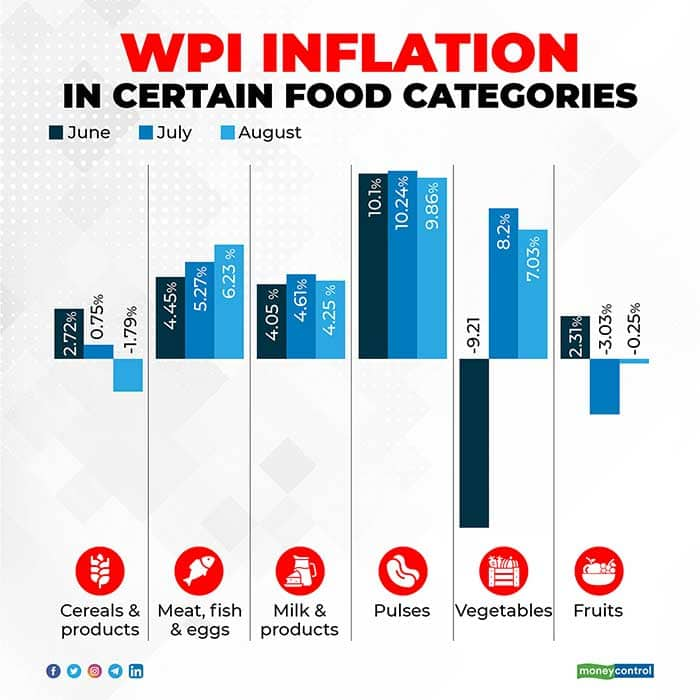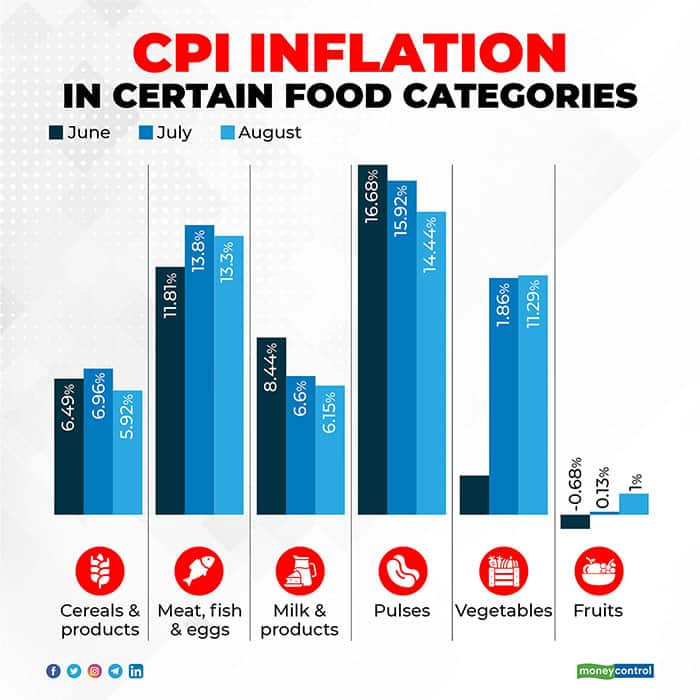



In the last two consecutive quarters (January-March FY20 and April-June FY21), the average consumer price index-based inflation breached 6 percent. For August, India's retail inflation, as measured by the consumer price index (CPI), stood at 6.69 percent.
However, contrary to retail inflation, India's wholesale price index (WPI) hasn’t risen at a similar pace. As supply chains remained disrupted during the months of lockdown, the gap between wholesale and retail inflation widened substantially during those months.
Though the gap between the two eased after the lifting of the lockdown began in a phased manner around June, in some categories like vegetables and pulses, the gap continued to remain wide. This shows that for some items, farmers are not even getting a fraction of what consumers are paying.
WPI inflation in vegetables for June contracted 9.21 percent while in the same month CPI inflation in vegetables stood at 1.86 percent. In July, WPI inflation in vegetables stood at 8.2 percent while CPI inflation for the same month in vegetables was seen at 11.29 percent. In August, WPI inflation in vegetables was at 7.03 percent while CPI inflation for the same month in vegetables was at 11.41 percent.


The country received 27 percent more rainfall than normal in August, the fourth-highest amount in the last 120 years, according to the India Meteorological Department.
The excess rain led to crop damage, which has had an impact on the purchasing ability of essential vegetables, especially onion and tomatoes. Heavy rainfall in Maharashtra and southern states such as Karnataka had damaged the onion crop, which also hurt supply.
Though data shows that consumers might be paying more for these crops, farmers have gained little as the gap in vegetable rates has again widened after narrowing slightly in July.
For pulses too, the gap between the two kinds of prices has widened. CPI inflation in pulses in August was 14.44 percent but the WPI inflation for the same was 9.86 percent. In July, CPI inflation in pulses stood at 15.92 percent whereas WPI inflation in the same month was 10.24 percent. In June, CPI inflation in pulses was 16.68 percent while WPI inflation was 10.1 percent.
The inability of farmers to realise prices, as reflected in the price variation in retail and wholesale prices, comes at a time when farmers are protesting against three farm bills. Farmer protests erupted across Punjab and Haryana and have also spread to parts of Uttar Pradesh.
Farmers are angry over the two contentious farmers' bill that both houses of Parliament passed. The Farmers' Produce Trade and Commerce (Promotion and Facilitation) Bill and the Farmers (Empowerment and Protection) Agreement on Price Assurance and Farm Services Bill were passed by voice vote against opposition protests.
Though the government claims these ordinances will help farmers get better prices for their crops, by legalising contract farming, for instance, farmers feel they will 'corporatise' the agriculture sector and further cripple them financially.
Farmer bodies have said the model of contract farming, for instance, that the government was trying to push had already been tried and tested in the sugarcane sector, which did not work as farmers ended up in large debts. Agricultural experts have said contract farming leaves farmers vulnerable, as seen in the case of PepsiCo suing farmers in Gujarat.
Discover the latest Business News, Sensex, and Nifty updates. Obtain Personal Finance insights, tax queries, and expert opinions on Moneycontrol or download the Moneycontrol App to stay updated!
Find the best of Al News in one place, specially curated for you every weekend.
Stay on top of the latest tech trends and biggest startup news.